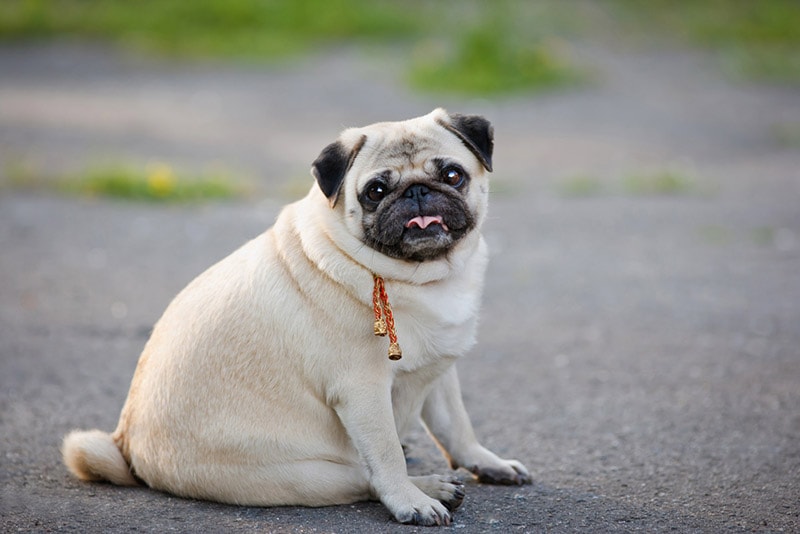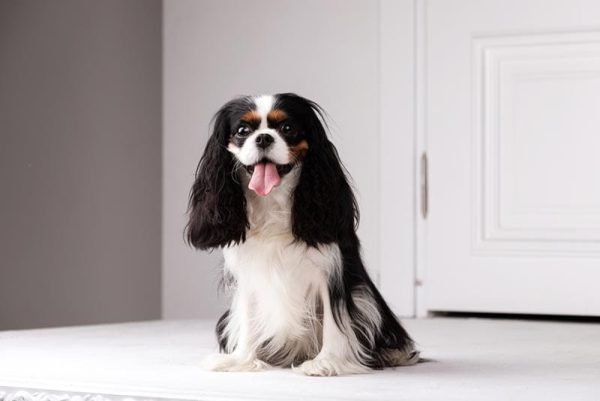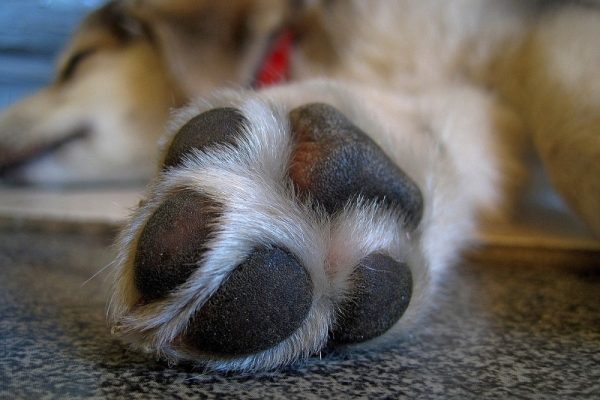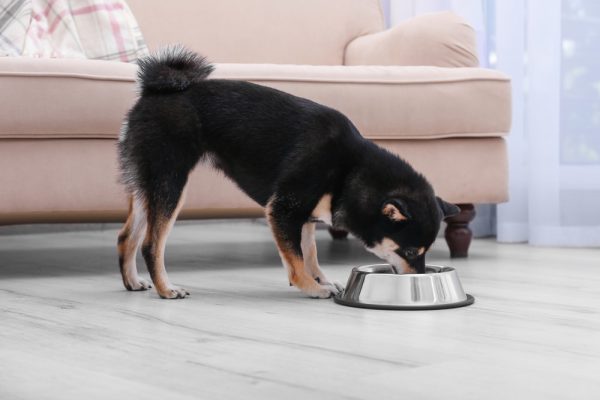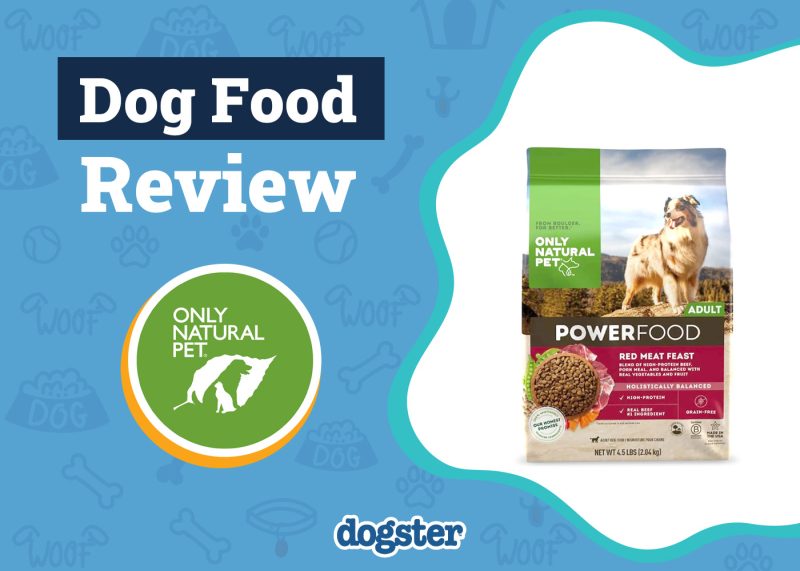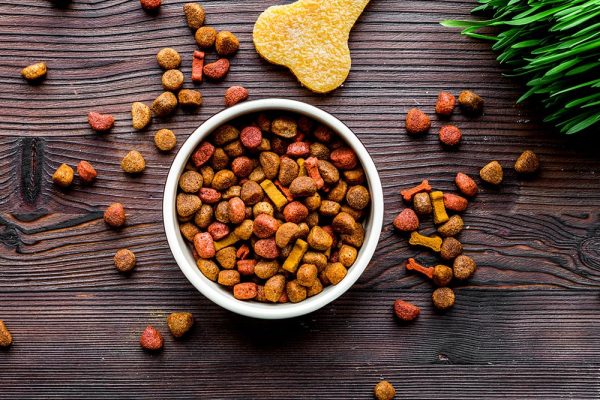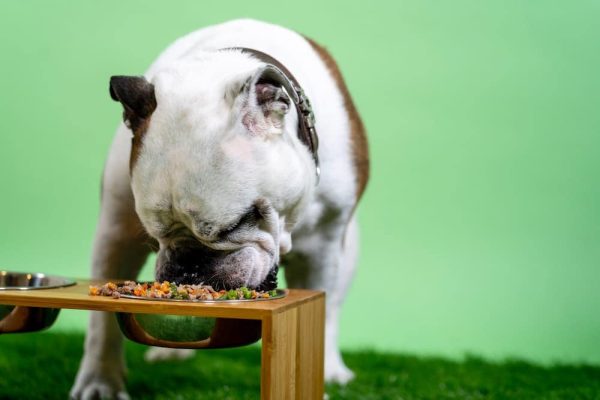Have you allowed your Pug to pack on the pounds? You’re not alone. Pugs are happy couch dwellers, so it’s no surprise that obesity is a very real possibility. Research from the Royal Veterinary College in the UK has indicated that Pugs are at the highest risk of obesity out of all dog breeds.
Unfortunately, obesity causes many issues for our Pugs, shortening their lifespan and putting them at higher risk of health conditions such as arthritis, heart disease, diabetes, and breathing problems. The increased risk of breathing issues is especially concerning for brachycephalic (short-nosed) dogs like the Pug.
In this article, we have 11 tips to help your Pug melt that stubborn fat.

The 11 Tips to Help Your Pug Lose Weight
1. Look at Your Pug’s Body Condition Score
The best way to determine if your Pug is overweight is to look at their body shape and body fat. Can you easily feel your dog’s ribs? Does your dog have a waist and a tummy tuck? Body condition scoring is an easy technique you can learn at home that helps you assess this and monitor their weight loss.
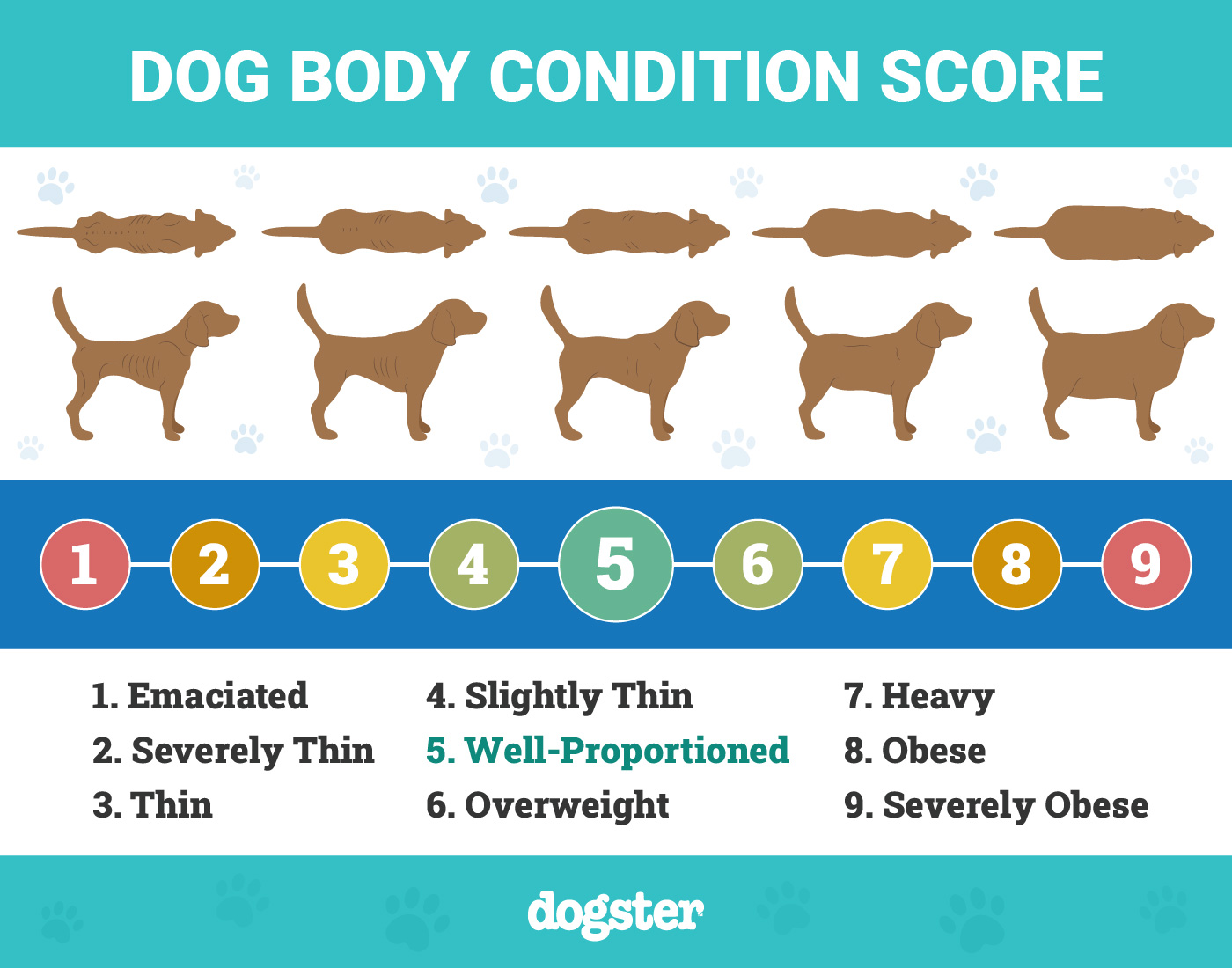
2. Schedule an Appointment With a Vet
A veterinarian can provide insight into your dog’s health through diet, exercise, and body condition scores.
A thorough examination (and blood work) can help a veterinarian determine any underlying health concerns causing weight gain, too. They can prescribe a prescription diet to help your Pug burn fat faster without affecting other health ailments.
3. Look at your Pug’s Current Diet
Look at your dog’s current diet and treats and extras. Sometimes, owners think their dogs aren’t eating that much, and keeping a food diary for a few days can be revealing, especially if there is more than one family member feeding! Little treats and table scraps add up quickly, and learning to resist those puppy dog eyes with all family members on board is an important start!
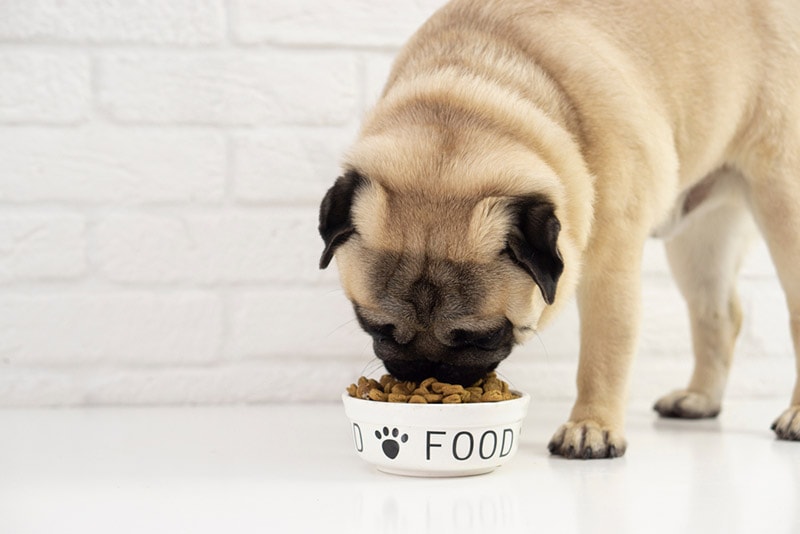
4. Weigh their food
Measure portion sizes; the most accurate way to do this is by weight. Consider dividing the daily food into several small meals to make your dog feel like they are getting more!
5. Table Scraps Are Off Limits
Cooked human food is often loaded with calories and bad ingredients for dogs. To prevent your Pug from eating table scraps, keep them out of the dining room and kitchen during dinner. Clean up the floor, and don’t offer any leftovers to your dog.
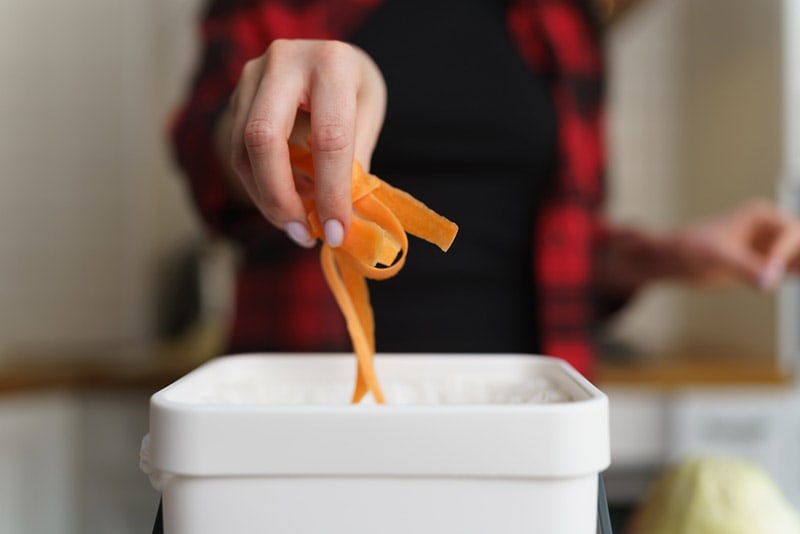
6. Avoid Treats
Treats add more calories to your dog’s diet. You can always provide treats when your Pug drops a few pounds.
7. Or Offer Healthier Treats
If you must serve treats, offer healthy snacks, like:
- Carrot sticks
- Apple slices
- Boiled chicken
- Broccoli
- Snap peas
- Dehydrated sweet potato
- Reserve some of their daily kibble allowance to use as treats
We recommend getting advice and guidance from a veterinarian if you have any questions or concerns regarding your pet’s diet and weight.
If you need to speak with a vet but can't get to one, head over to PangoVet. It's our online service where you can talk to a vet online and get the personalized advice you need for your pet — all at an affordable price!

8. Utilize Slow Feeders and Food Puzzles
Slow feeding will help your dog eat slower and feel full faster. Plus, it’s a fun game that kills time.
9. Exercise
If your dog’s health allows it, regular exercise expends energy, builds and maintains lean muscle mass, and takes their mind off food! You’d be surprised by how many calories you and your dog can burn with a simple daily walk. Walks are easy, can be enjoyed on a lunch break, and mentally stimulate your Pug.
Because Pugs are brachycephalic, they do best with moderate exercise in the early mornings to late evenings when the day is coolest.
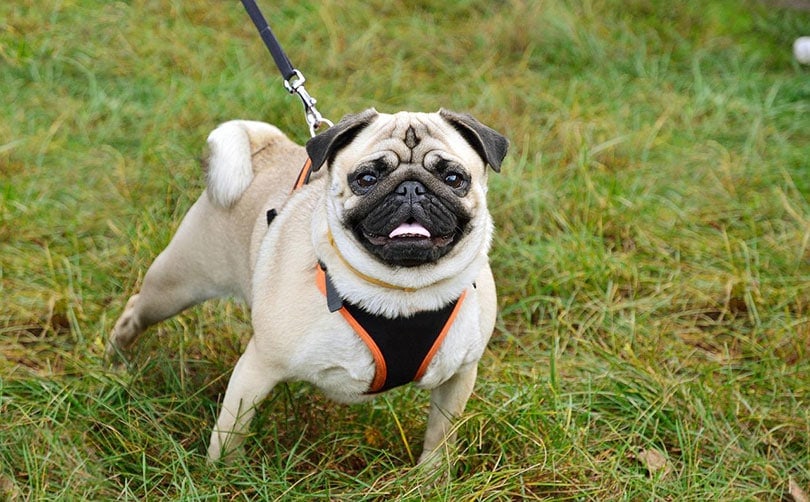
10. Try New Toys
Dogs go wild on new toys for several minutes, sometimes hours. Adding new toys to your pup’s collection can make exercise fun if you don’t have time to take your dog for a walk or the weather isn’t permitting.
11. Make Gradual Changes
Weight loss involves a complete lifestyle change, which may shock your Pug, and it’s best to make gradual changes. It will be easier on your Pug, and you’ll be more likely to stick to the new habits.
For exercise, you can do this by adding one extra weekly walk, extra mile, or a living room play session to part of the evening routine. Regarding the Pug’s diet, mix the new kibble into the old kibble gradually until your dog fully transitions to the new kibble.
Patience and consistency are the keys to success! Weight loss should be slow and steady at around 0.5%-1% loss per week. Any weight loss can make a big difference to a Pug’s breathing.
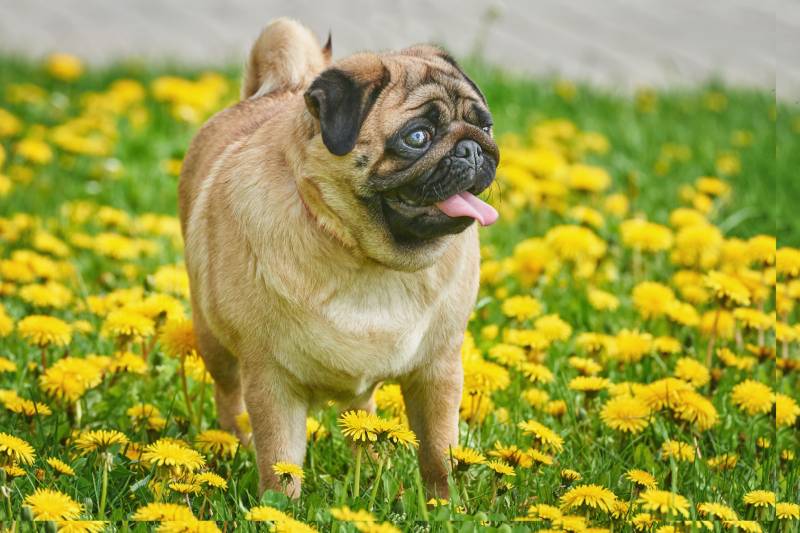

Conclusion
Fat loss takes time, so don’t feel discouraged if you don’t see your Pug making much progress in the beginning. Some dogs take longer to lose weight than others. Remember that the priority is a lifestyle change and not a quick fix. Over time, you and your Pug will notice the changes and feel happier and healthier.
Featured Image Credit: studio37th, Shutterstock
